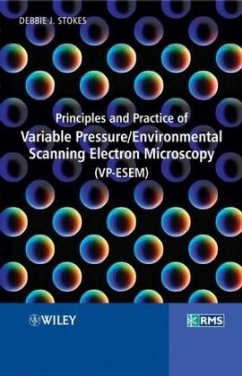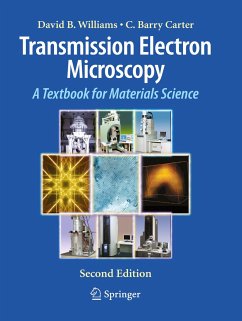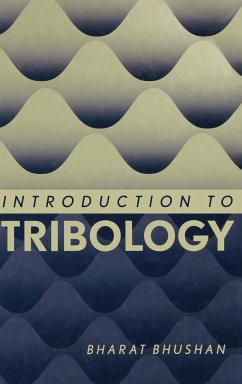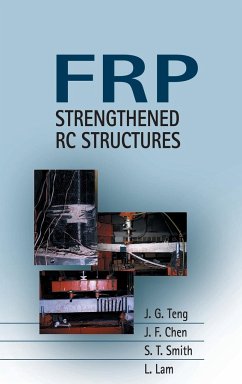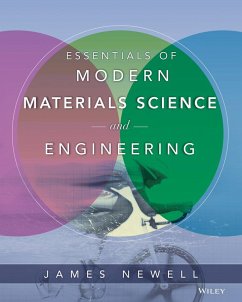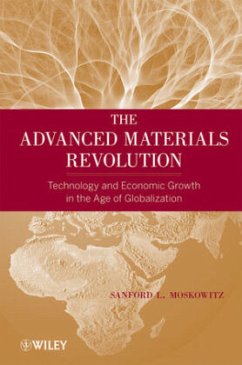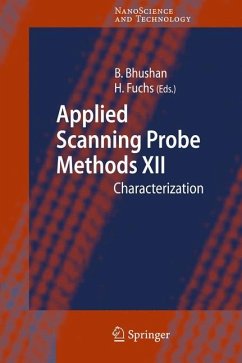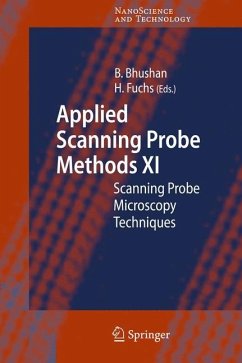
Scanning Auger Electron Microscopy

PAYBACK Punkte
154 °P sammeln!
An eagerly awaited volume edited by two academic researchers with extensive and reputable experience in this field. Emphasis is given to the underlying science of the method of Auger microscopy, and its instrumental realization, the visualization and interpretation of the data in the sets of the images that form the output of the measurements and the methods used to quantify the images.
This book concentrates upon a form of scanning electron microscopy in which electrons are focused onto the surface of a solid sample and Auger electrons are emitted into an energy analyzer in which their kinetic energy is established.
Following an introductory chapter setting the scene on the topic, chapters 2 and 3 are concerned respectively with the theory of the Auger process and the instrumentation needed in Auger microscope. Chapters 4 and 5 discuss the limits to the spatial resolution of the microscopy and the methods used to separate the chemical information in an Auger image from potentially confusing effects (referred to as imaging artefacts) due to other properties of the sample, the experimental geometry employed or the methods used for collecting or displaying the data. Chapter 6 presents the software tools useful to interpret the information in an Auger image. Chapter 7 discussed methods that can convert the intensities of the pixels in a set of images using different Auger peaks from the same area of a sample into a set of maps revealing the atomic concentrations at each point in the surface - image quantification. Chapters 8 and 9 describe some of the most important applications of Auger microscopy in the fields of metallurgy and of semiconductor device characterization.
The material in the book is intended as a guide to the subject of Auger electron microscopy and so it is hoped that it will be of interest to researchers in this field as well as to others who wish to discover what can be achieved with this technique and what are its limitations. In addition, it will be useful to analysts working with SAMs who are hard pressed to measure many samples and have little time to work on other aspects of the behaviour of their instrument or the problems that they may, perhaps unwittingly encounter.
Following an introductory chapter setting the scene on the topic, chapters 2 and 3 are concerned respectively with the theory of the Auger process and the instrumentation needed in Auger microscope. Chapters 4 and 5 discuss the limits to the spatial resolution of the microscopy and the methods used to separate the chemical information in an Auger image from potentially confusing effects (referred to as imaging artefacts) due to other properties of the sample, the experimental geometry employed or the methods used for collecting or displaying the data. Chapter 6 presents the software tools useful to interpret the information in an Auger image. Chapter 7 discussed methods that can convert the intensities of the pixels in a set of images using different Auger peaks from the same area of a sample into a set of maps revealing the atomic concentrations at each point in the surface - image quantification. Chapters 8 and 9 describe some of the most important applications of Auger microscopy in the fields of metallurgy and of semiconductor device characterization.
The material in the book is intended as a guide to the subject of Auger electron microscopy and so it is hoped that it will be of interest to researchers in this field as well as to others who wish to discover what can be achieved with this technique and what are its limitations. In addition, it will be useful to analysts working with SAMs who are hard pressed to measure many samples and have little time to work on other aspects of the behaviour of their instrument or the problems that they may, perhaps unwittingly encounter.



